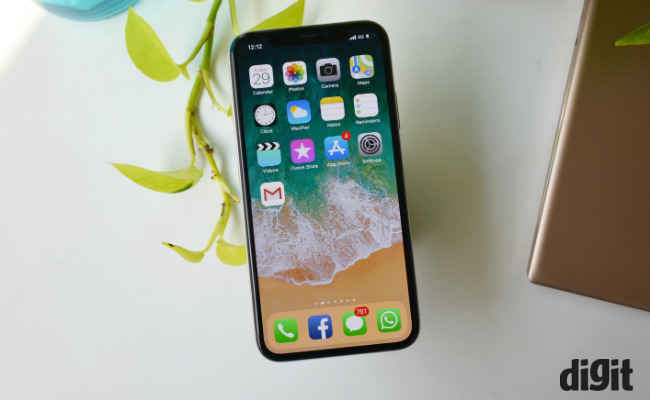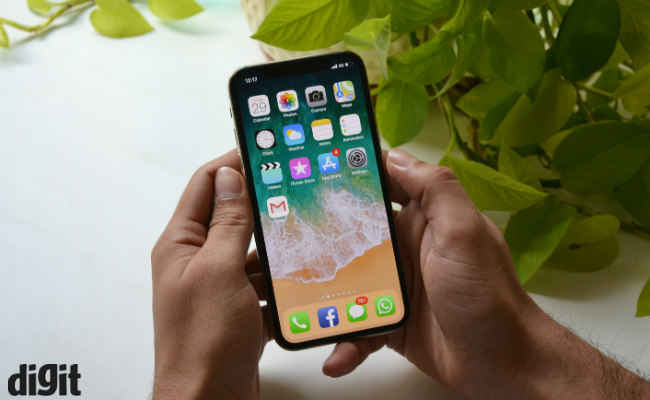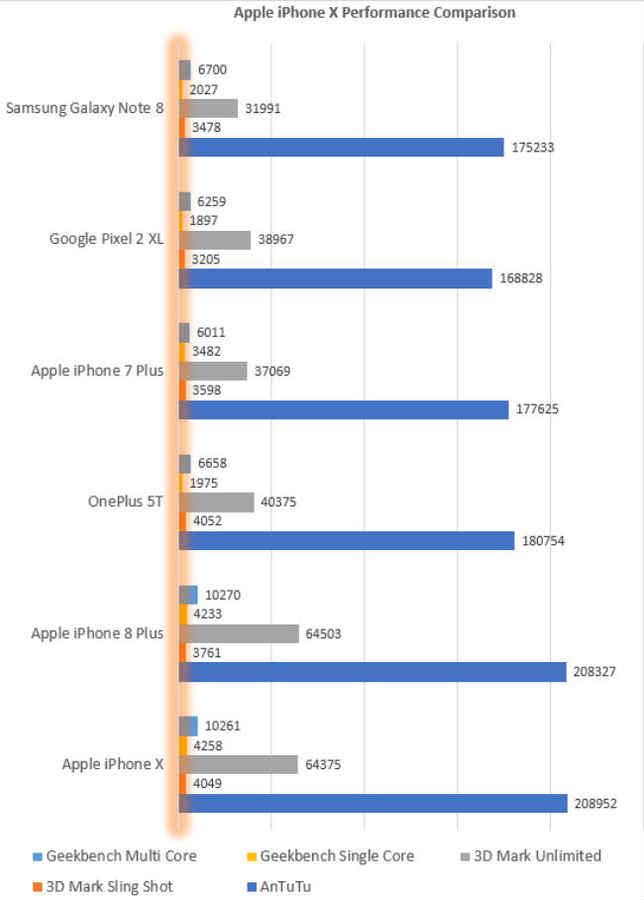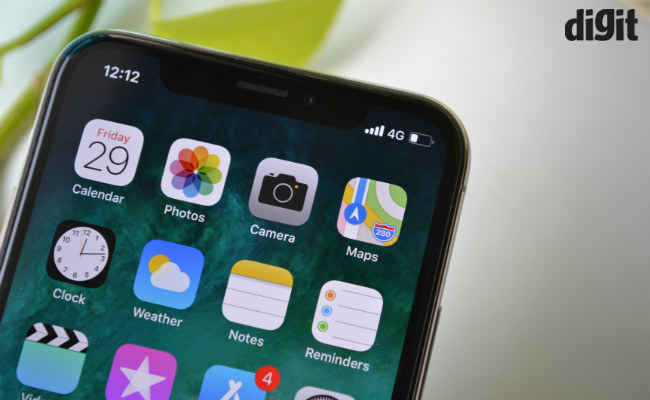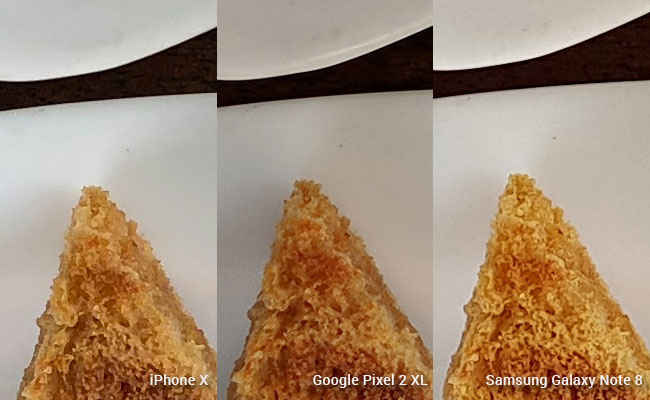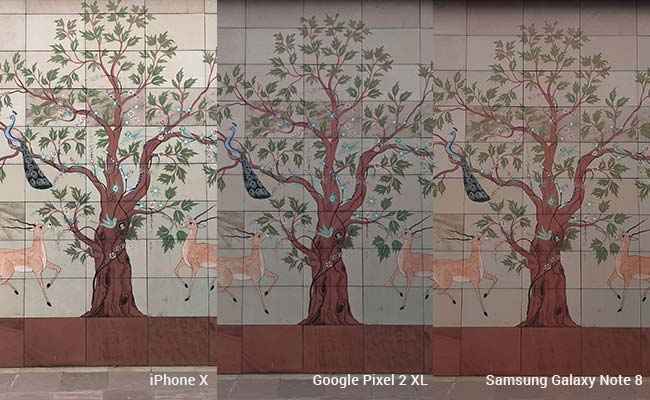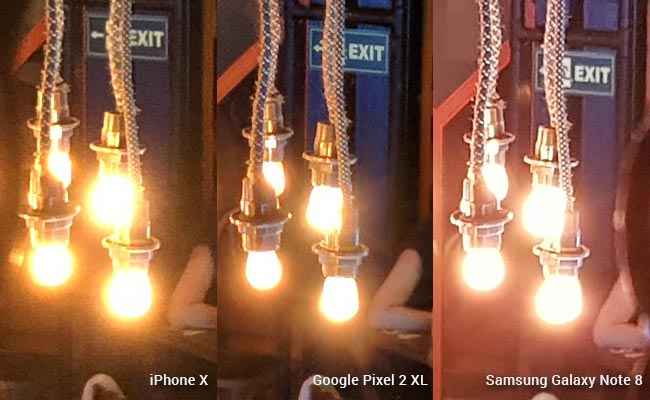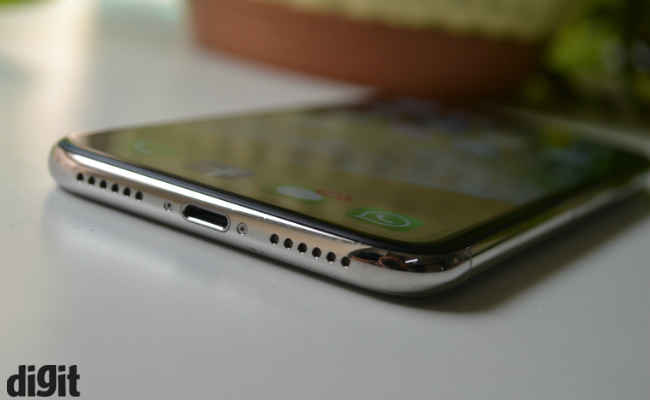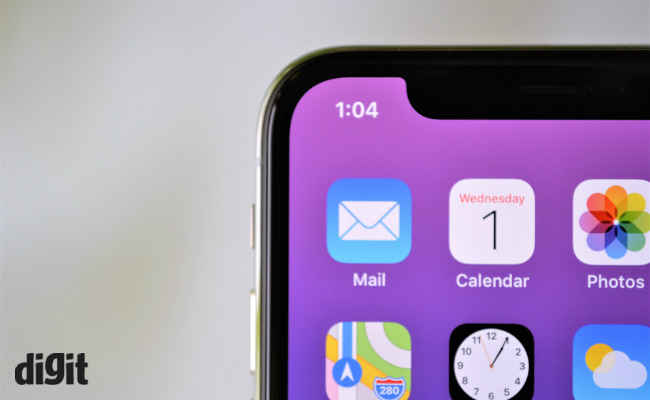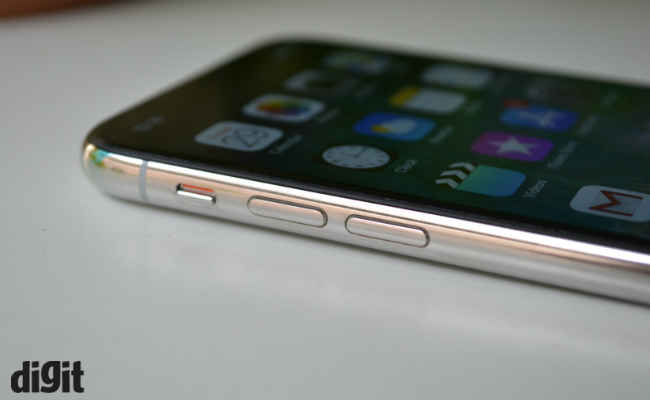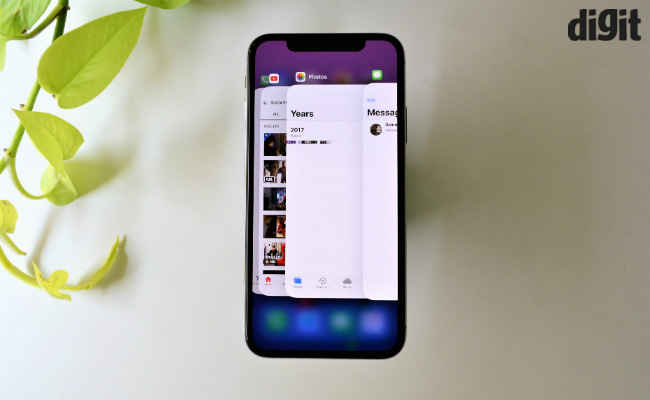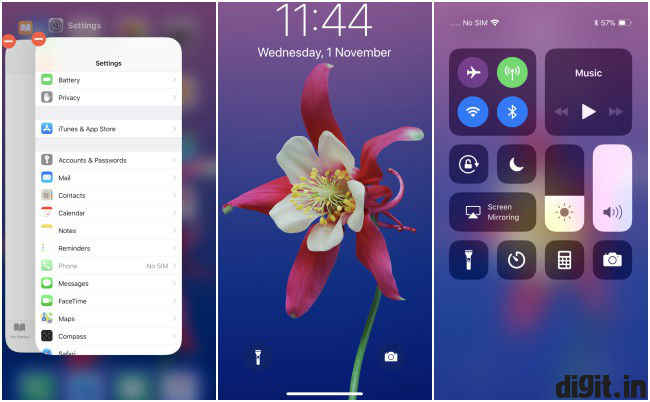Apple iPhone X Review Review : Sets a new benchmark, but not a game changer
The very first version of the future of phones as per Apple, the iPhone X, is an excellent smartphone and a whole new direction from Apple. Its restrictive pricing though keeps it away from being a no-brainer when it comes to buying a flagship smartphone. For the asking price, the iPhone X needs to be head and shoulders above the rest in every aspect. Which is not the case.
What could have been a runaway hit…
The iPhone X should have been the only iPhone for 2017, alongside a larger all-screen "plus" variant. Both replacing the iPhone 7 and 7 Plus, while retaining the $650 (approximately Rs. 60,000 in India) starting price tag. Apple's decision to price the iPhone X 50% higher and launching the iPhone 8 series alongside it suggests Apple's cautious approach towards the future of iPhone. And it only casts a cloud of uncertainty in the mind of the loyal Apple iPhone buyer. Should the iPhone X be treated as the first (almost beta like) variant of the future of iPhone? Is it wiser to wait for the next version of iPhone X to truly get the future of iPhone, allowing Apple to improvise and perfect the device? Besides these questions, the 50% bump in the asking price has no justification on why one has to pay that much to buy the refreshed iPhone. Its’s hard to credit Apple for all the changes and technology that it brings to the table with the iPhone X when you consider the fact that it’s asking you to pay-up a whole lot more for a design refresh and few essential features that were long overdue. With the iPhone X Apple has not only reimagined the iPhone but also its price point, and that’s not going down well with many (including us).
"The iPhone X should have been the only iPhone for 2017, alongside a larger all-screen "plus" variant. Both replacing the iPhone 7 and 7 Plus"
Tops the performance charts: Scores a 9/10
The iPhone X is the fastest phone today (alongside the iPhone 8 Plus), not just in terms of pure benchmarks and numbers but also in terms of how it zips past the most strenuous of tasks with ease. Be it recording 4K videos at 60 FPS and editing them on the device or taxing the GPU with long intense hours of nonstop gaming across some of the most graphically heavy titles. There's nothing that comes close to iPhone X's real-world performance, let alone benchmarks. The custom designed A11 Bionic chip powering the iPhone X is its greatest strength in terms of delivering unmatched performance while keeping the power envelope well under control. A lot of credit also must go to Apple's excellent software capabilities, and how it tunes iOS to eke out maximum performance from the chip.
That gorgeous display: Scores a 9/10
The iPhone X has the best screen of all smartphones today. Not on basis of pixel density or color gamut, or even the brightness levels alone. It's the combination of these factors, alongside Apple's high-quality standards for OLED panels that makes the iPhone X's OLED display visibly better than the rest in all departments. Opting for a high-resolution OLED panel over the trusted IPS panel called for a few compromises in terms of viewing angles and color shift, which currently are native drop backs of OLED display technology. However, the iPhone X display manages to minimize these issues to indiscernible levels in daily usage. The best in class contrast levels, color accuracy and calibration allow the iPhone X to boast of the best smartphone display in business today. The automatic color management on the iPhone X allows it to shift between various color gamut within the scope of the DCI-P3 color space. iPhone X's support Mobile HDR is also well implemented. Though Mobile HDR is largely software based, it does require higher color gamut support along with finer brightness control to render high dynamic range content on a smartphone screen. The iPhone X still uses an 8-bit panel, but we do expect the next version to sport a 10-bit panel and support the Mobile HDR Premium standard.
Apart from higher pixel density, the iPhone X also brings fundamental change to the display aspect ratio. With a 19.5:9 aspect ratio, the iPhone X display is a lot taller and offers wider aspect ratio than the traditional 16:9 aspect ratio. This calls for apps developers to make the necessary changes to accommodate the newer aspect ratio to take full advantage of the additional real estate. Most big-league apps have updated the apps and do take fill-in the entire screen while many local apps are yet to provide for the newer aspect ratio.
The best iPhone Camera: Scores a 8/10
The iPhone X camera improves on the iPhone 8 Plus with dual optical image stabilization (for wide as well as a telephoto lens) and a brighter telephoto lens with f/2.4 aperture. It also uses Apple's custom ISP chip for image processing that's been tuned for better noise management. In real world performance, the iPhone X tops the charts when it comes to colors, white balance, and speed of capture. However, it does rank below the Google Pixel 2/XL when it comes to resolving details and sharpness. And that keeps it away from being the best camera in the flagship category. One feature we sorely miss is the ability to shoot still images in native (19.5:9) aspect ratio. That would make optimum use of the wide angle display when it comes to viewing photos on its gorgeous OLED display.
We’ve done a detailed comparison between the top 3 smartphone cameras in business today, head over to our iPhone X vs Google Pixel 2 vs Samsung Galaxy Note 8 comparison to check how the iPhone X fares against the other 2 heavy weights. Here are some shots below that will give you a fair idea of iPhone X’s rear camera prowess in varied conditions.
Design: Scores a 9/10
Before we get down to the key design changes – no home button and Touch ID being replaced by Face ID, let’s ogle at the looks, build quality and premium feel of the device. For starters, the iPhone X is as close as you can get to a truly bezel-less design of any flagships in the market today. The Samsung Galaxy S8 and the Google Pixel 2 XL evidently come with top and bottom bezels, just that they are a lot less prominent. In case of the iPhone X, there is no bottom bezel and the top is adorned by the much talked about “notch” that keeps it away from being absolutely bezel free. The notch (that houses Face ID sensors and front camera) does disturb the overall symmetry and seamless feel of the device and takes some getting used to. The left and right areas to the notch are used to display network information and battery levels. However, due to limited space, you no longer have the option of getting the battery levels displayed in percentage, which is disappointing. Coming back to the looks, design, and feel of the device, the iPhone X feels more premium and well built of all flagships with the Samsung Galaxy S8 and the Note 8 coming close in the same regard. While being the most good looking and premium smartphone around, the X also needs the most protection. The all glass back and front literally makes the iPhone X a ticking bomb if you were to drop it on tarmac or any rough surface. It won’t explode, but a cracked iPhone X screen will cost a bomb to replace. Cost of replacing front or back glass is obscenely high and there’s no one time free screen replacement guarantee that comes with similar all-glass flagships like the Samsung Galaxy S8 and Note 8 models. The stainless-steel edge that wraps around the device does lend a sense of strength and assurance. The extra shiny nature though has people divided on whether it adds or takes away from the overall style quotient of the device. When it comes form factor and size, the iPhone X is compact, has the heft and offers a snug fit. One handed usage is not an issue in most situations and going back to a taller and wider iPhone 8/7 Plus can lead to withdrawal symptoms.
Dropping the physical home button to accommodate an all screen design is the most significant change that Apple did with the iPhone X. This was achieved with 2 new features, the Face ID technology for unlocking and overall security along with the swipe/gesture based navigation to reach the home screen as well as navigating between apps. The swipe/gesture based navigation works flawlessly and as a user, you will take no time to make that shift. There is no missing the home button as far as navigation is concerned. The swipe based navigation is as seamless as the home button based navigation if not better on all counts except one. Apple has clearly done an excellent job of ensuring the home button is not missed in terms of navigation.
As far as security is concerned, Face ID does replace Touch ID successfully when looked at from a holistic point of view. But it does require additional measures to make it work seamlessly. For instance, even after disabling the “Require Attention for Face ID” option in the settings, the Face ID unlocking only works when the phone is held straight up against the face, even the slightest angle would prevent the iPhone X from unlocking the device. Additionally, the average speed of unlocking is slower than Touch ID. Which does get apparent when moving from a Touch ID based iPhone to the iPhone X. The future iPhone lineup is expected to completely ditch Touch ID in favor of Face ID and for that to happen, Apple will need to improvise its depth based 3D face recognition tech to be faster and more accommodating. Having said that, as an introductory feature that changes the way you unlock and secures a device, Face ID is a commendable achievement, a direction that other flagship smartphones are expected to follow. And Apple will be hailed for bringing a change to the smartphone industry.
Finally, the iPhone X also supports wireless charging (hence the glass back) along with another flagship feature that was missing in previous flagships – dust and water resistance. We’ve dunked the iPhone X in water (accidentally) and it came out just fine. The weather resistance was sorely missing in previous generation iPhones and its an essential tick mark on the checklist of must have features for a flagship which the iPhone X now fulfills. It’d be catastrophic had the iPhone X skipped these features at its asking price.
Software and Battery Life: Scores a 8/10
The software is where Apple devices score, score above all. In case of the iPhone X, iOS 11 not only runs butter smooth, but it also shows no signs of bugs or random crashes or reboots, making it a rock-solid device from a software point of view. Like we mentioned earlier, Apple will have to put extra pressure on app developers to bring support for the change in display aspect ratio, ensuring all apps are able to take advantage of the screen real estate. Apps on 16:9 aspect with letterboxing and thick borders look ugly and bring down the overall experience of using the device.
Talking of software, the iPhone X brings Animoji to the iPhone X, and it’s a fun feature that utilizes the TrueDepth camera to create custom animated characters that use your voice and mirror your facial expressions. These can be shared via the messaging app. The feature works as advertised and is just the starting point of what we think are many more ways in which Apple can make use of the TrueDepth sensor to bring new features. The TrueDepth camera also comes into action when capturing selfies with blurred backgrounds, which a nice touch. The iPhone X also offers the portrait lighting mode which we first saw in the iPhone 8, and we found it to do slightly better in the iPhone X, particularly when using the stage light modes.
As far as battery life goes, the iPhone X will just about manage to get through a heavy day and even go beyond in case of moderate usage. Though, it stays a bit behind the iPhone 8 Plus, which is currently the battery champ of all flagships in the market. While both house identical batteries in terms of capacity, we recon the true depth camera that powers Face ID module does guzzle a lot more juice in comparison to the Touch ID and that explains the dip in battery life. The ultra-bright, high resolution OLED screen could also be taxing the iPhone X that much more than the 1080p screen on the iPhone 8 Plus. In terms of testing, in our looping video test (video natively stored and not streamed) we were able to get 11 hours of battery life on a full charge. The iPhone X does support fast charging and manages to charge 45% in 30 minutes with the supplied charger.
Closing thought:
We’d just be repeating ourselves here, but it’s still worth it. The iPhone X is an excellent smartphone that is marred by its unjustifiable price tag.
Soham Raninga
Soham Raninga is the Chief Editor for Digit.in. A proponent of performance > features. Soham's tryst with tech started way back in Dec 1997, when he almost destroyed his computer, trying to make the Quake II demo run at >30FPS View Full Profile

